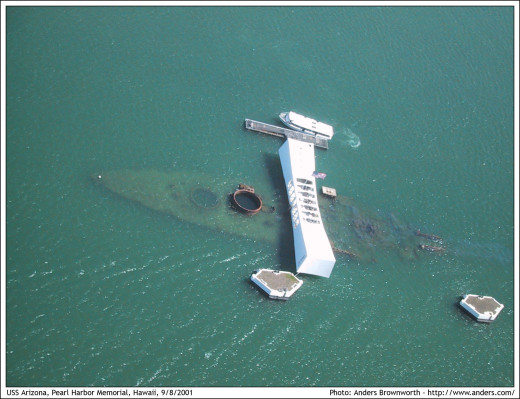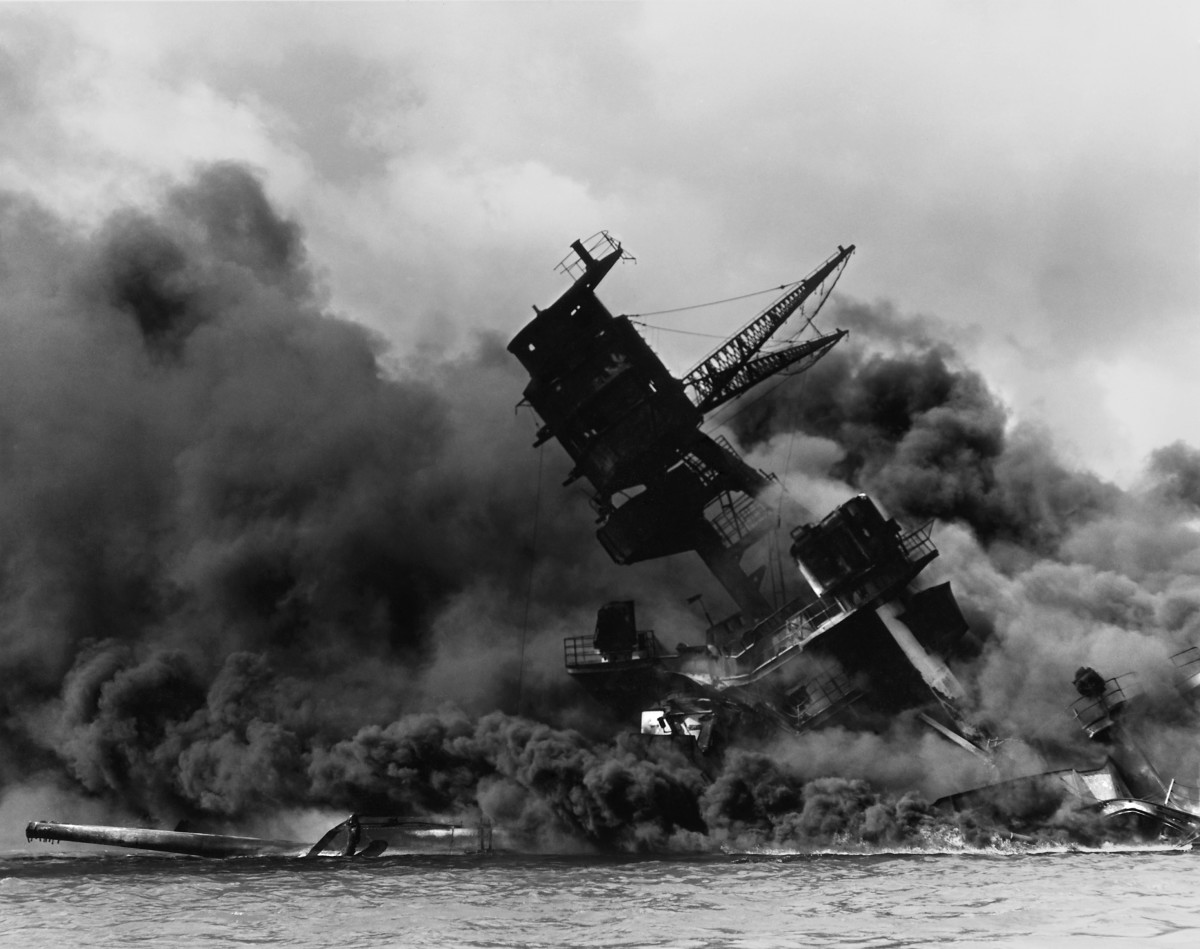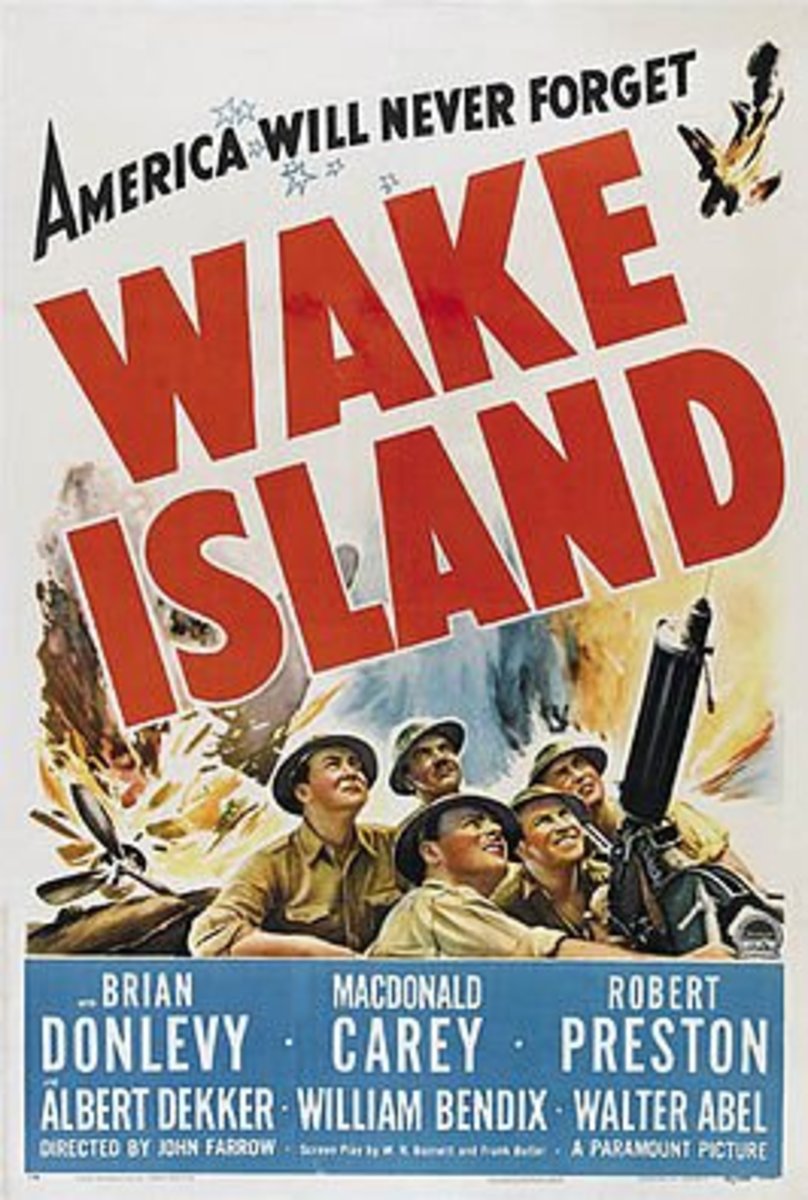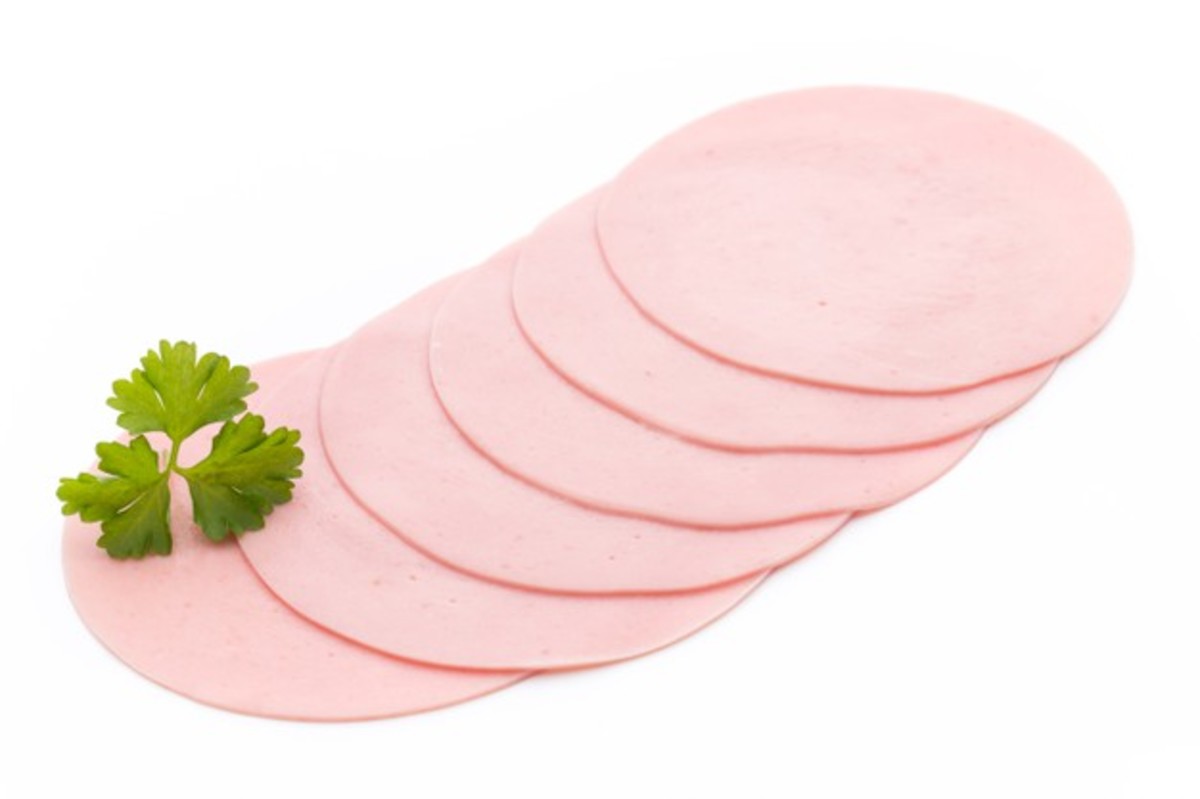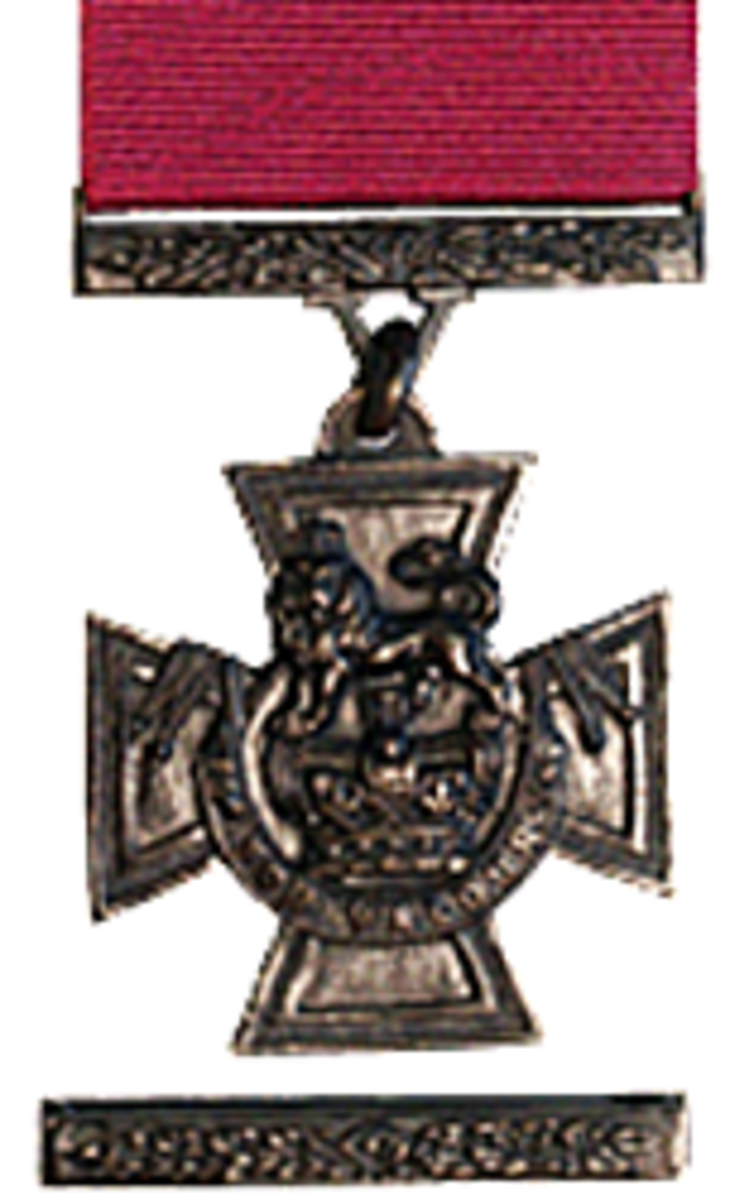- HubPages»
- Education and Science»
- History & Archaeology»
- History of the Modern Era»
- Twentieth Century History
Pearl Harbor 1941
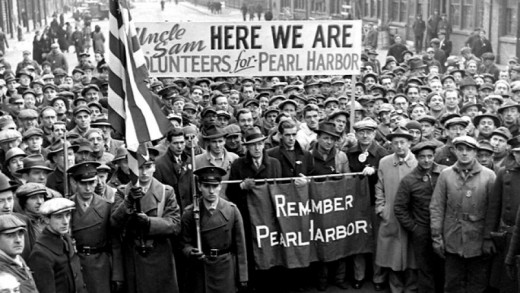
“Yesterday, December 7, 1941 — a date which will live in infamy — the United States of America was suddenly and deliberately attacked by naval and air forces of the Empire of Japan.” — Franklin Delano Roosevelt
Quick Facts
- The attack on Pearl Harbor occurred on December 7, 1941
- The attack lasted 110 minutes
- 2,335 US Servicemen were killed during the attack
- 1,143 US Servicemen were injured
- 68 civilians were killed
- 35 civilians were wounded
- 65 Japanese servicemen were lost with one being captured by the United States
- The attack on Pearl Harbor brought the United States into World War II
- The Japanese specifically chose Sunday to attack on because they felt the Americans would be more relaxed and less alert on this day
- The main target during the attack on Pearl Harbor was to be the US Aircraft carriers but they were out to sea
- The USS Nevada tried to make it out of the harbor during the attack but it was hit so many times by Japanese forces that it beached itself so it would block the entrance/exit to the harbor.
- The USS Oklahoma was hit so many times by Japanese forces that it flipped upside down.
- The Japanese sent five submarines to aid in the attack, however the United States sunk four of them and captured the fifth.
Before The Attack
Early in 1941 the United States of America moved its Pacific Fleet to Hawaii from it previous location in San Diego, California. This was done to discourage any further military aggression from Japan in the Far East. Through-out the year of 1941 Japan and the United States when through various talks to help improve relations between the two countries. It was under this guise of peaceful talks that Japan began planning its attack on the Pacific Fleet. Japan began it plans to attack the Pacific Fleet in the early months of 1941 and continued planning the attack throughout the "peaceful" talks the country had with the United States. While the two nations were still in talks of "peaceful" treaties and pacts in November of 1941, Japan was secretly moving its fleet towards Hawaii in plans for its imminent strike.
By December 1941 it was believed that war between Japan and the United States was unavoidable and a Gallop Poll of the American public taken in 1941 stated tat 52% of the American population believe that the USA would soon be at war with Japan.
Even though most thought war was coming the United States government did not believe that Pearl Harbor would be the first place of attack. Many believed that if Japan was going to attack it would be in the Philippines.
Japanese Expectations
Japan hoped by attacking Pearl Harbor it would destroy important vessels in the American Fleet and keep the fleet from interfering with Japanese plans to attack The Dutch East Indies and Malaya. Japan also hoped to give a hard and sudden blow to American morale. Japan hoped by that this severe blow to America would allow Japan to complete its conquests in Southeast Asia without any interference.
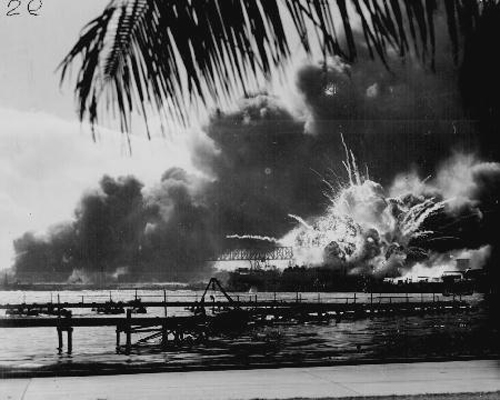
Japan Plans
Japan planned to attack in several waves. The first wave was to be the primary attack and carry most of the weaponry to attack in the shallow waters of Pearl Harbor. It was the first wave which would carry unique Type 91 aerial torpedoes which had been designed with special rudders to allow them to operate in the shallow waters of Pearl Harbor. The first wave was ordered to attack any battleships, aircraft carriers, destroyers, or any cruisers in the harbor. The first wave bombers were ordered to attack any air fields and destroy any planes to ensure that no American planes would be able to get into the air to fight the attack.
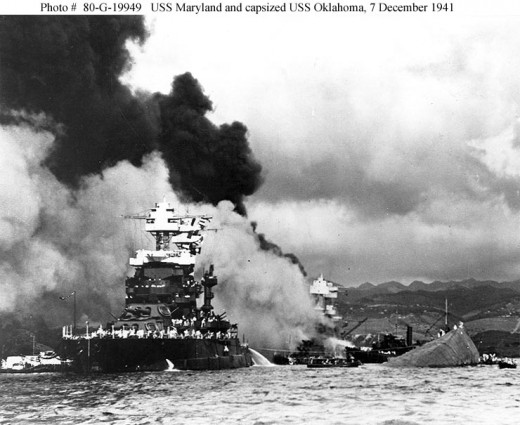
The Attack Begins
Japan would send 414 planes towards Oahu to destroy the Pacific Fleet.
-First Wave: attack to focus on battleships and aircraft carriers
-Second Wave: attack to focus on Ford Island and Wheeler Field
-Third Wave: attack to focus on aircraft at Ford Island, Hickam Field, Wheeler Field, Barber's Point, and Kaneohe
The attack was detected on radar by the US Army at Opana Point. The two operators who detected the large target reported the target, but were told that it was the delivery of B-17 bombers that were expected. The two men who detected the large formation on the radar thought the formation seemed too big to be B-17 bombers but they neglected to tell the officer they reported the formation to the the size of the formation, and the formation was brushed aside as the schedules B-17 bombers. There were only to be six B-17 bombers to be delivered. The radar detected a much larger formation than that but the communication between the officers was very poor.
At 7:48 a.m. Hawaii time the attack on Pearl Harbor began. Using the surprise attack to their advantage the Japanese utilized there slow moving altered torpedoes in the first wave to destroy the important American battleships, while other Japanese planes attacked American airfields.
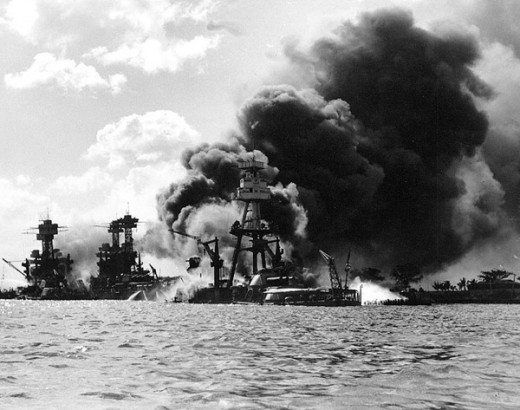
Waking Up To War
Men aboard the ships were awaken by alarms, gunfire, and bomb exploding. The following message played over the loudspeakers "Air Raid Pearl Harbor. This Is Not A Drill." The Americans were at an obvious disadvantage already due to the surprise of the attack but on top of the surprise attack, ammunition lockers were locked, guns were unmanned, and aircraft were parked wing tip to wing tip. In fact only four of the 31 Army batteries got into action during the attack.
The USS Arizona was among the first casualties of the surprise attack and 1,177 remain entombed in the Arizona below the Pacific waters. The USS Arizona was hit by a 1,760 pound armor piercing bomb which ignited the ship's forward ammunition magazine. This enormous explosion sunk the battleship in a mere nine minutes.
Actual Film Footage of Attack on Pearl Harbor
Actual Footage from 1941 Pearl Harbor Attack
90 Minutes of Hell
Ninety minutes after the attack began, the attack was over. In total 2,008 sailors were killed, 218 airmen and soldiers were killed, 109 marines were killed, and 68 civilians were killed. 2,403 Americans died and 1,178 individuals were wounded. Eighteen ships were sunk, and nearly half of the death toll came solely from the explosion from the USS Arizona.
There were 402 aircraft on the island of Oahu. 188 of those planes were completely destroyed and 153 of them were damaged.
Japanese Loses
A total of 59 Japanese airmen and nine submariners were killed and one captured. Japan would lose 29 of the 414 planes it sent to attack Pearl Harbor. 9 of the 29 planes were lost in the first wave and 20 of the 29 planes were lost in the second wave. 74 additional airplanes were damaged in the attack.
There was to be a possible third wave of attacks which would focus on Pearl Harbors Fuel and Torpedo storage areas. The third wave would have also focused on maintenance and dry lock facilities. However, Nagumo (Japanese Leader) withdrew his forces for a variety of reasons: The advantage of the surprise attack was gone and American troops were responding more defensively during the second wave of attacks, weather has worsened, fuel was running low, and Nagumo believed that the objective of neutralizing the Pacific Fleet had been accomplished.
Now looking back it has been found that Nagumo and his army missed many vital parts in order to neutralize the Pacific Fleet. The attack on Pearl Harbor spared important dockyards, maintenance shops, oil depots, American aircraft carries, and submarines. If these areas or parts would have destroyed it could have halted an American offensive for up to a year.
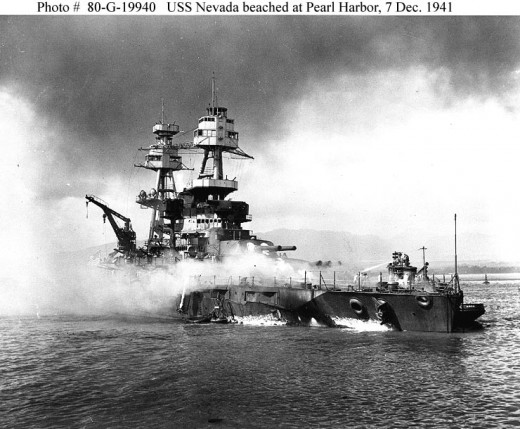
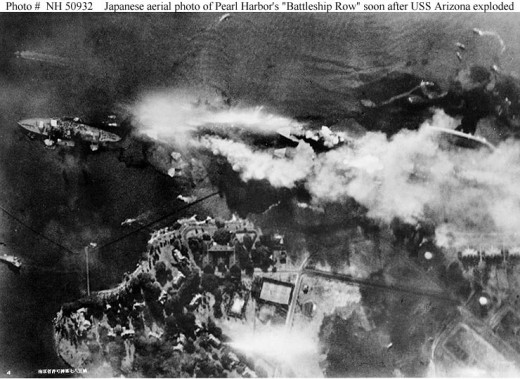
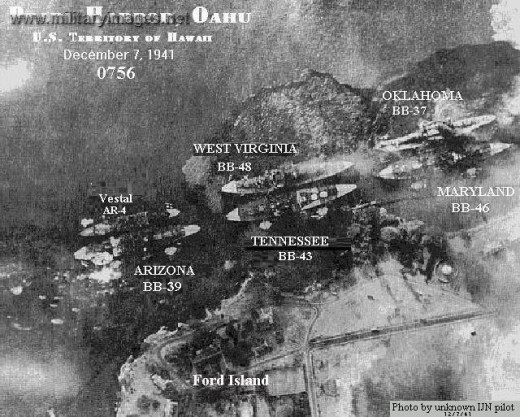
Aftermath
After the attack on Pearl Harbor the United States declared war on Japan. Soon after declaring war on Japan, the United States also declared war on Germany and Italy. Sadly another result of the attack on Pearl Harbor was the relocation of Japanese American citizens to internment camps. Over 110,000 Japanese Americans were removed from their homes and transferred to camps in California, Idaho, Utah, Arizona, Colorado, Wyoming, and Arkansas.
The attack also caused the Canadian province of British Columbia to forcefully remove any Canadians with Japanese decent either to internment camps or to be deported back to Japan.
Since Japan attacked America without any declaration of war, the attack was eventually seen as a war crime.
